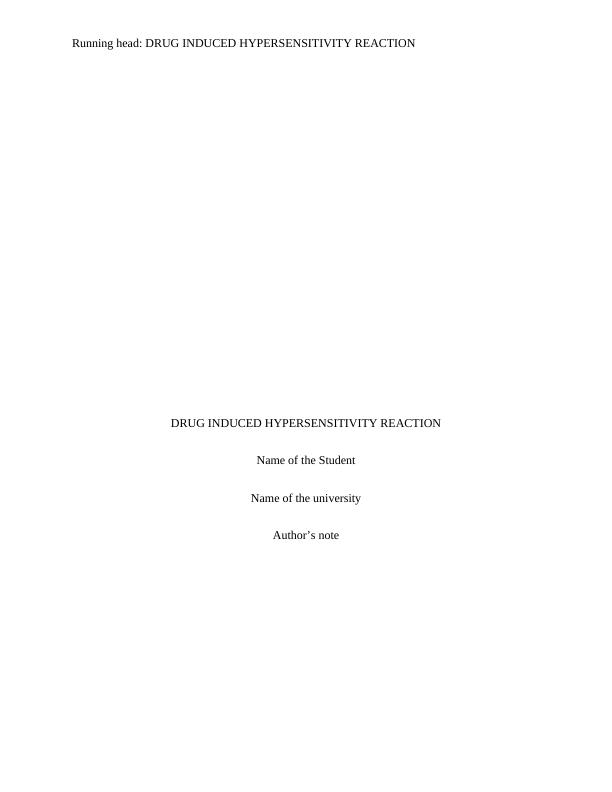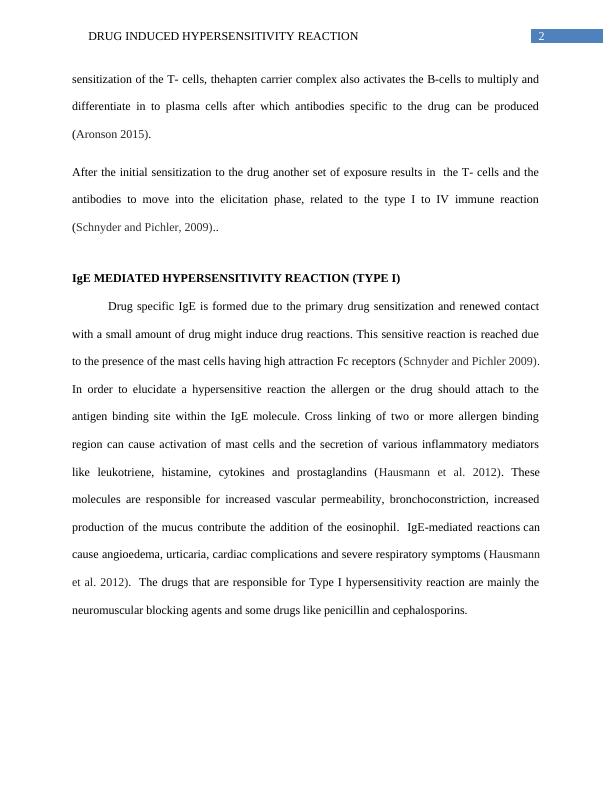Drug Induced Hypersensitivity Reaction: Causes, Symptoms and Treatment
9 Pages1926 Words271 Views
Added on 2023-06-10
About This Document
This article discusses drug induced hypersensitivity reactions, their causes, symptoms and treatment. It explains the different types of hypersensitivity reactions caused by drugs, including IgE-mediated hypersensitivity reaction, IgG-mediated cytotoxicity and T-cell-mediated drug hypersensitivity. The article also covers the Hapten and Prohapten concept and treatment options for drug induced hypersensitivity reactions.
Drug Induced Hypersensitivity Reaction: Causes, Symptoms and Treatment
Added on 2023-06-10
ShareRelated Documents
End of preview
Want to access all the pages? Upload your documents or become a member.
Case Study on Drug Induced Anaphylaxis
|10
|2740
|123
Drugs-Induced Hypersensitivity PDF
|7
|1917
|335
Type of Asthma: Allergic Asthma in a Six-Year-Old Child
|5
|1500
|186
Asthma Pathophysiology | Nursing Assignment
|11
|3811
|19
Hypersensitivity, Allergy, and Asthma: Understanding the Immune Response
|9
|1948
|95
Medical Nursing: Asthma and Pneumonia Case Studies
|15
|3455
|94



